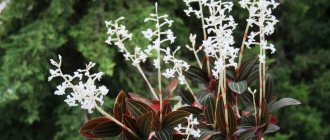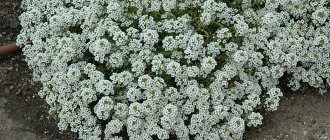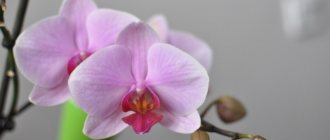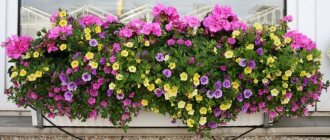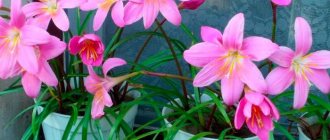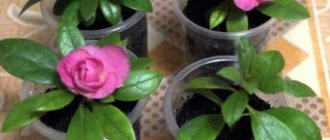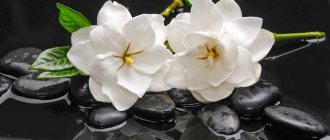Azaleas are valued for the abundance and beauty of their blooms. Photos with beautiful flowers do not leave anyone indifferent, and flower growers have a desire to admire such beauty in person. In addition, the buds bloom in winter, when there is a particularly lack of bright colors. Planting and growing indoor rhododendron at home requires knowledge and strict adherence to flower care rules. But even the capriciousness of the azalea will not prevent a novice gardener who really decides to grow this plant from caring for it.
Description of the plant
Azalea, often found on sale under the name "indoor rhododendron", is part of the genus Rhododendron, which belongs to the Ericaceae family. Although this division is quite arbitrary. Azaleas are compact evergreens suitable for indoor cultivation. Rhododendrons are distinguished by the fact that they shed their leaves for the winter and, due to their large dimensions, are used only in landscape design.
The dimensions of rhododendrons sometimes reach impressive sizes.
The name of the plant was given by the famous Swedish botanist and systematizer Carl Linnaeus. Translated from Greek it means “dry”. This is what an azalea looks like before flowering.
Europe became acquainted with azaleas quite a long time ago, at the end of the 17th century. However, this plant began to be widely cultivated only 50 years later. And the first breeding hybrids appeared only two centuries later. The plant appeared in Russia at the beginning of the 20th century.
Europeans believe that a blooming azalea brings happiness to the home. Therefore, those who grow it always try to ensure that on the Christmas table there is a pot with a bush densely strewn with bright buds.
In nature, azaleas are compact, low shrubs. They can most often be found in Southeast Asia, Japan and China. But some species live in Western Europe, the USA, Russia (Caucasus, Far East, Eastern Siberia).
The azalea bush is characterized by intensive branching. Young shoots are densely covered with short “pile” of grayish or light brown color; as they mature, they become smooth. The leaves are small (2.5–4 cm in length), ellipsoid or lanceolate, densely pubescent on the underside. They are thin, but tough, smooth to the touch, dark green, glossy and shiny. Flowers on very short stalks are located in the axils of the leaves, 2–6 pieces each .
Most azalea species live in Southeast Asia
Azalea buds open on New Year's Eve or immediately after it. There are so many of them that the leaves are practically invisible. Flowering continues until mid-spring. Azaleas bloom annually when they are 3–4 years old.
Planting plants in open ground
Planting a rhododendron flower should be carried out according to special rules, taking into account the climatic characteristics of a particular region of Russia. We also strongly recommend choosing only winter-hardy varieties, so that later there will be no problems with covering the crop for the winter.
If you decide to plant the plant in open ground, then it is best to carry out a similar procedure at the end of spring, when the azalea has not yet recovered from hibernation. In case of urgent need, transplantation into open ground can be carried out at any time of the year in the active growth stage. However, it is highly not recommended to carry out this procedure within two weeks after flowering.
The place for the culture must be chosen with special care, since this directly determines how comfortable the rhododendron will feel in its new habitat. It is best to choose that part of the site that is constantly in the shade. You should also pay special attention to the soil, since rhododendrons prefer well-drained, loose soil.
When choosing a site for planting, pay special attention to the amount of light, since rhododendron does not tolerate direct sunlight, especially in the hot season. If there is no suitable place on your site, then it is recommended to create artificial shading using a special garden net.
Garden rhododendron (photo of the flower, see above) is also highly recommended to be planted near some body of water, for example, a pond or swimming pool. If such exterior elements are not provided on your site, then the crop will need additional spraying with soft and warm water, especially before flowering, after which the spraying should be replaced with high-quality watering.
The best option for a neighborhood would be trees with spreading branches that diffuse sunlight. Pine is considered one of the most suitable plants, since its root system is located at a sufficiently deep distance that it will not interfere with rhododendron. But it is best to avoid proximity to birch, maple, linden and alder, since these trees will take most of the moisture from the soil, not to mention the nutrients that are vital for the proper development of rhododendron. If it is not possible to avoid such proximity, then it is recommended to insulate the holes in advance using non-woven material, for example. thick film.
How to create optimal conditions for a plant
Azalea is not well adapted to the microclimate of modern apartments, especially when heating radiators are running there. Therefore, the gardener will have to try to create conditions suitable for her and maintain them.
Table: required microclimate for growing azaleas indoors (temperature, spraying, lighting)
| Factor | Recommendations |
| Location | The best option is a window sill facing east or west. Regular ventilation of the room is mandatory. In summer, azalea can live on a balcony, veranda or in the garden. If possible, bury the flower along with the pot in the shade of a tree. The plant is returned back to the room in early or mid-August, without waiting for cold weather. |
| Lighting | Bright diffused light and protection from direct sunlight. In winter and in cloudy weather, fluorescent or special phytolamps are used to extend daylight hours to 10 hours. |
| Temperature | 12–15ºС during the active growing season and 6–8ºС in autumn (approximately 1.5–2 months). For selection hybrids - 20–22ºС and 14–16ºС, respectively. To ensure optimal performance, the pot is covered with snow or ice. This temperature is a necessary condition for the formation of new flower buds. Azalea has a very negative attitude towards its sharp fluctuations (in any direction). |
| Air humidity | The optimal figure is about 70%. Azalea categorically does not tolerate dry air. In summer, during extreme heat and during the heating season, it is regularly sprayed (so that drops of water do not fall on the petals). |
Azalea loves bright light, but does not tolerate direct sunlight.
Where and how much can you buy rhododendron?
Indoor varieties of Rhododendron are a frequent guest on the shelves of flower shops, so purchasing a miniature shrub for your collection will not be difficult .
You can choose a suitable plant either in one of the commercial outlets in the city, or directly from the manufacturer, at a thematic exhibition, or “from hand”, having studied numerous offers on private advertisement sites on the Internet.
Reference! The cost of an indoor azalea in Moscow and St. Petersburg can vary from several hundred to several thousand rubles, depending on its size and variety.
How to plant and replant
When replanting, you should be careful, it is better to work with gloves, not forgetting about the toxicity of the plant.
Time and reasons for transplantation
Azalea grows quite quickly and branches intensively, so young plants need annual replanting. For adults, one procedure once every 2-3 years is enough, when the roots tightly entwine the earthen ball or a layer of moss appears on the surface of the soil. You can replant the plant immediately after flowering.
Choosing a pot
Azaleas have a superficial root system, so they do not need a large and deep pot. The best option is a container similar to a salad bowl or soup plate.
The azalea pot should be shallow
Soil composition
Azaleas prefer an acidic substrate, which is quite atypical for houseplants (pH 4.5–5.0). It is maintained at the required level by watering the flower once every 5-6 weeks with a 0.2% solution of citric acid or aspirin (tablet per 1 cup of water). Other requirements for the soil are nutritional value, fibrousness, looseness and good aeration. There is ready-made soil on sale, designed specifically for rhododendrons (most often, pure heather soil), but you can prepare it yourself from coniferous soil, peat chips and coarse river sand (6: 3: 1).
Soil for azaleas can be purchased at the store, but experienced gardeners prefer to prepare it themselves
How to replant an azalea
The step-by-step transplant process is as follows:
- Remove the old plant from the pot, trying to destroy the earthen ball as little as possible. This is easier to do if you water the soil moderately about 30–45 minutes in advance.
- Using a sharp, disinfected knife, cut off approximately 1.5–2 cm of fringe at the bottom of the earthen ball. You can also make shallow cuts on the sides and slightly fluff the roots.
- Pour expanded clay or other drainage material into a new pot with a layer of at least 3 cm. On top - about the same amount of new substrate.
- Place the earthen ball in a new container, add fresh soil. Gently shake the pot several times to distribute the soil evenly.
- Water the plant thoroughly. The best option is to immerse it for 45–60 minutes in a basin of water at room temperature, then allow excess moisture to drain.
- Place the pot in a wide planter, filling the space between the walls with wet sphagnum moss or coconut fiber. As it dries, it needs to be moistened.
- The roots of the azalea will gradually become exposed - this is a natural process. To prevent them from drying out, mulch the soil in the pot with peat chips, wood shavings, sawdust, and pine needles every 4–6 months.
Azaleas are transplanted using the transshipment method
Features of transplantation after purchase
Flower growers advise replanting azaleas immediately after purchase. This must be done due to the fact that plants, as a rule, are in transport soil and are treated with various synthetic substances to preserve their presentation. However, azaleas are often purchased while they are in bloom, and replanting in this state is difficult for the plant to tolerate. Therefore, the choice remains with the florist.
Common Rhododendron Diseases
Indoor azalea is rarely affected by pests. However, violation of agricultural practices leads to problems associated with diseases.
Chlorosis . The disease can be recognized by the specific color of the plant's foliage. Between the veins the leaf turns yellow. This discoloration is associated with a deficiency of magnesium and iron - rhododendron is not able to synthesize chlorophyll. The development of the disease is facilitated by insufficiently acidic soil, in which flowers cannot fully absorb nutrients.
To prevent the development of chlorosis, it is necessary to plant cuttings in acidic soil. To prevent the development of the disease, the surface of the soil can be covered with pine needles, watered with water with citric acid, or sprinkled with colloidal sulfur. If the plant has extensive affected areas, it is recommended to replant it in new soil.
Powdery mildew. Warm air combined with high humidity promotes development. For prevention purposes, you should not feed with fresh manure when the plant is planted in the garden. To get rid of it, you can use fungicides.
Sooty mushroom. A dark coating appears on the shoots, buds, and foliage, which can easily be removed with a cotton pad. The disease will not lead to the death of the plant, but will aggravate its development, as it does not allow full breathing. To get rid of sooty fungus, you need to change the conditions of detention.
Leaf spotting. If the rules of care are not followed, the leaves become covered with gray or brown spots. At first you can notice 1-2 spots, then their number increases significantly. Fungicide treatment is carried out.
Verticillium, fusarium, late blight. As a result of damage to the root system by various types of rot, first the leaves wither, then the stems and the plant dies. For preventive purposes, it is important to use drainage and breathable soil when planting.
If one of the diseases is noticed, it is recommended to remove the plant from the pot, shake off the old soil and replant it in new soil.
How to properly care for a plant
An azalea at home can be preserved for a long time only if you scrupulously follow all the recommendations for caring for the flower.
Watering: when, how, how much
The substrate in the container with the plant should always be slightly moist. Both overdrying (even short-term) of the soil and stagnation of moisture in the pot are equally destructive for the flower. Alternate between regular watering from a watering can with a long narrow spout and the immersion method. After 4–5 hours, excess moisture must be drained from the pan.
Most often, orchids are watered using the immersion method, but this method is also quite suitable for azaleas.
In optimal azalea conditions, one watering every two days is sufficient. In extreme heat, their number can reach up to two per day. The plant does not like very warm water; it is enough to warm it to room temperature. For sanitary purposes and to increase air humidity, it is useful to spray the azalea and the surrounding air with a fine spray bottle weekly or even twice a week (except for the flowering period).
Only soft water is used, ideally rain or melt water. Tap water should be left for at least a day with the addition of citric acid or apple cider vinegar (until a precipitate forms in the form of whitish or grayish flakes), passed through a filter or boiled.
Feeding: what fertilizers will be needed
Azaleas require feeding from late spring to mid-summer, as well as during the formation of buds, at the end of flowering and at the beginning of active growth. When new flower buds are formed, natural organic matter (infusions of cow manure and bird droppings), alternating with complex mineral fertilizers, is most beneficial. It is enough to feed the plant once every 20–25 days. Forming buds love superphosphate (1.5 g per 1 liter of water). Azaleas are watered with the solution twice with an interval of 7–10 days. The rest of the time, ammonium sulfate, ammonium nitrate and other nitrogen-containing fertilizers (2 g per 1 liter of water) are suitable.
There are special fertilizers for azaleas; the feeding solution is prepared strictly according to the instructions
Azalea really does not like chlorine, so before purchasing a specific product, carefully study the composition.
Trimming
The more magnificent the bush, the fewer buds it produces. Therefore, adult plants are pruned immediately after flowering, leaving 4–5 leaves on all branches formed last year. Shoots that violate the configuration of the crown, are curved, or weakly growing - are cut to the ground. Young shoots next to the developing flower buds are carefully plucked out.
Azalea grows quickly, so it needs regular pruning.
Formation of a tree on a headquarters (bonsai)
Using pruning, you can create a tree with a trunk approximately 20–30 cm high. To do this, choose the strongest and most even shoot, getting rid of all the rest. It is fixed in a vertical position, tied to a support and turning the pot every 2-3 days. All lateral growth is immediately removed. When the stem reaches the desired height, the tip of the shoot is pinched. From the shoots that then appear, 4–6 are selected, located at an equal distance from each other around the trunk. Then you can form another 2-3 tiers.
The azalea tree looks very impressive, but requires constant attention from the gardener
It is much easier to form a beautiful bush. Young azaleas are pinched at a height of 10–15 cm. The same is done with shoots that appear annually until the plant takes the shape of a regular ball or close to it.
Room care
Keeping indoor rhododendron in optimal conditions is the key to a healthy appearance of the plant, as well as lush, long-lasting flowering.
You should start following the care requirements from the first days after purchase. To make adaptation to a new place go more smoothly, it is recommended to add immunity-strengthening agents (for example, Epin) when watering 1-2 times a week (the first few weeks).
Watering
The substrate in the flowerpot must be kept moderately moist, but not wet. Mostly, ordinary tap water is used for irrigation (but always settled), but it is better, if you have the opportunity, to take melt or rain water.
Did you know? According to beliefs that exist in many European countries, indoor rhododendron blooming in the house attracts good luck and happiness. Therefore, for Christmas, many families try, if not to grow, then at least to buy a flowerpot with a bush strewn with beautiful flowers as a decoration for the holiday table.
Since the plant prefers an acidic environment, lemon juice should be added from time to time (5-7 drops per 1 liter of liquid will be enough). Most gardeners water the azalea in a tray, and it takes as much moisture as it needs. After 30–40 minutes, all the water remaining in the pan must be drained.
Some experts recommend alternating top watering and watering in a pan, and also periodically use the immersion method: lower the flowerpot for 5-7 minutes in a deep container of water, and then allow the excess moisture to drain completely. Particular care should be taken to water the plant in winter. It's best to put it in a tray.
Top dressing, fertilizers
Proper and timely feeding is very important for the lush flowering of azaleas. It is recommended to buy special mineral fertilizers only for these flowers. It is extremely important that the chosen product does not contain chlorine.
Did you know? The image of a rhododendron is a symbol of one of the US states, Washington.
In the spring-summer period, the plant needs feeding at least once a week, and in the autumn-winter period - once a month. When the rhododendron begins its budding period, give it fertilizers that contain potassium and phosphorus. The most famous and accessible are “Uniflor-bud” and “Kemira-Lux”.
Trimming
In order for rhododendron to delight you with abundant flowering, you need to know some of the features of its pruning. It is best to do this in May. Young shoots are pinched so that they have 4-5 leaves. If a new shoot forms near a flower bud, it must also be removed.
With proper pruning, you can also form a tree-like or bush-like type of crown. If you want to get an azalea tree, you need to leave only the most powerful branch (which will become the trunk in the future) and tie it to a support, and cut off all the rest. When the shoot reaches the desired height, the top will need to be removed - after this, branches will appear on the plant. To ensure a uniform crown shape, you need to periodically turn the plant and pinch the shoots.
To get a bush-like azalea, it is recommended to shorten all shoots, leaving no more than 10 cm in length. To ensure uniform formation of the crown, the pot is periodically turned with the other side towards the light. When the desired shape has already been achieved, to maintain it, you need to remove all weakened and diseased branches, as well as those shoots that make the bush too thick.
Find out also about the features of caring for indoor jasmine.
During the flowering period
The main advantage of rhododendron is its beautiful flowers. After cutting, the inflorescences retain their appearance for a long time. Blooming season varies by variety, but most azaleas bloom in winter or early spring, bringing a splash of color to a cold, snowy landscape.
As a rule, 2–4 buds are formed from one bud. To extend the flowering period, you need to remove faded flowers from the plant along with flower stalks and seed pods.
During the rest period
The dormant period for azaleas begins in late spring, when they have completely faded. During this period, the frequency of watering, spraying and fertilizing does not change, but the plant should be put in order: trimmed, if necessary, replanted, placed in partial shade, or even taken out into the garden.
Find out also about the peculiarities of growing rhododendron in the Leningrad region.
Diseases and pests
The main cause of azalea diseases is errors in care. Based on the symptoms, you can guess what exactly you did wrong:
- The foliage fades, turns yellow and falls off - the plant is either overheated in the sun or suffers from poor watering. Yellowed leaves most likely indicate watering with low-quality water or fertilizers containing lime.
- Spots appeared on the leaves - depending on the color of the spots, it can be either rust or gray rot. Or, the temperature regime is not suitable for the plant. Affected leaves should be carefully removed.
- Late blight (the appearance of dark spots and dry rot) indicates excessive watering and stagnation of water in the pan. Most often, plants are susceptible to this during the dormant period, standing in a cool place.
- The plant sheds buds and flowers - water is not suitable for azaleas. It is highly likely that it has not been settled and contains chlorine. Another reason for this could be that the room temperature is too high.
- Darkening leaf tips talk about very hot air and low humidity. It can also be a burn from direct sunlight.
In addition to improper care, insect pests can cause deterioration of azaleas:
- Spider mite. The main reason for the appearance is too low air humidity. The main sign that an azalea is affected by this pest is the appearance of cobwebs on the leaves. If the plant is not too affected, it is washed under a warm shower and then treated with either a soap solution or garlic water. If the affected area is large, acaricides are needed.
- Azalea moth. Drying leaves are considered a symptom of this pest. This specific species of moth parasitizes only azaleas, forming cocoons on the lower part of the leaf. To get rid of this problem, you need to fumigate the plant with sulfur vapor or treat it with Rogora-S solution.
- Mealybug. The appearance of this pest is indicated by the appearance of a light waxy coating, reminiscent of cotton wool, as well as a sugary discharge. The plant is treated with garlic infusion, soap or onion juice. If the plant is severely affected, or home methods do not give the expected result, you can use Inta-vir or Fufanon.
- Whiteflies. These pests feed on rhododendron sap. When you touch a flower, they fly away in different directions. If there are few of them, you can move the flowerpot to a cooler place and treat the bush with garlic infusion. You can also use a glue trap. For more extensive damage, Confidor and Fitoverm will help.
- Shield. When this pest appears, brown or yellow spots appear on the leaf veins. Getting rid of them is not so easy, since they secrete a special waxy secretion that protects them from the effects of chemicals. A combined method will be effective: clean the leaves mechanically, and then treat them with Aktara.
- Greenhouse thrips. This insect eats rhododendron leaves, as evidenced by the characteristic holes on them. Affected leaves become dull, then turn yellow, and then completely fall off. Negatively affects the growth and flowering of the plant. For treatment, the bush is treated with a nicotine solution (0.3%) or malathion emulsion (0.2%).
- Aphid. Colonies of this small pest most often appear in the first half of the year. As a result of their vital activity, rhododendron leaves curl, the buds do not open, and the plant loses its appearance and vitality. To get rid of aphids, you should treat the azalea with Actellik, Fitoverm or Karbofos.
Common mistakes of a beginning gardener
Azalea is quite capricious and most often reacts to errors in care by the absence or short duration of flowering, and deformation of the buds. But other alarming symptoms may also arise. Therefore, you need to learn how to correctly interpret the signals given by the plant.
Table: how azalea reacts to errors in care (why the plant can dry out, shed leaves, look lethargic)
| What does the plant look like? | What is the reason? |
| The leaves droop, lose their tone, and become covered with wrinkles. | Too little and/or infrequent watering or low air humidity. Other possible causes are extreme heat and/or bright sun. |
| Azalea quickly sheds its blooming flowers. | |
| The leaves are turning yellow. | Unsuitable clay substrate or use of hard and/or cold water for irrigation. |
| Leaves fall. | The indoor air is too dry. Another possible cause is inappropriate temperature (high or low). |
| Leaves and young shoots dry out. | Lack of light or improper feeding. This can also be caused by untimely transplantation (especially during flowering) or another stressful situation. |
| Growth is inhibited and very few buds are formed. | Unsuitable soil, too narrow a pot that does not allow the root system to develop properly, or lack of fertilizer. |
Azalea leaf loss may be caused by low indoor humidity or unsuitable temperature.
What to do to resuscitate an azalea
Almost all problems that arise when growing azaleas can be solved.
Azalea doesn't bloom
The plant can bloom if the following factors are met:
- low temperature during the dormant period (6–8°C), necessary for the formation of flower buds;
- the plant should be shaded from direct light;
- sufficient, but not excessive watering;
- proper pruning;
- fertilizing with fertilizers containing phosphorus and potassium;
- choosing the right pot (shallow and low).
Leaves wither and fall
Leaves will fall off due to excessively dry air in the room. A running central heating system should be kept away from the azalea. Do not forget to spray the air, maintaining the required humidity (about 70%).
The plant is drying up
An azalea can dry out due to several factors. To avoid this problem, you should:
- adjust the feeding regime;
- provide the plant with good lighting;
- replant carefully, without damaging the roots and leaves;
- Water and spray the air in a timely manner.
Azalea turns black
Perhaps it is a fungal disease, such as fusarium, or pest damage. To revive the bush, you will have to resort to chemicals. Be also prepared to repot the plant, as fresh soil will help the plant recover.
Leaves curl and turn yellow
This is how the plant can react to an unsuitable substrate. If you are a beginner gardener, it is better not to make the mixture yourself, but to purchase the necessary soil in a specialized store. In addition to this reason, pay attention to the water used for irrigation - to irrigate azaleas, you need soft, room temperature water.
The leaves are drying up
In this case, you also need to reconsider the feeding regime. The cause of drying leaves may be insufficient watering. You need to lower the pot into a container filled with water.
Video: the difficulties of growing azaleas
Possible problems when growing rhododendron
When keeping azaleas, some gardeners encounter growing problems that lead to yellowing of foliage, falling flowers, and wilting of shoots. Indoor rhododendron: care at home in this case, you will have to reconsider the temperature regime, watering and fertilization to eliminate shortcomings.
Possible problems when growing rhododendron
1. Short flowering can be due to many reasons. Direct sunlight, insufficient watering, and too dry air can have an effect. To extend the flowering period, you need to place the flower pot away from heating devices and only occasionally spray the crown.
2. Yellowing of the foliage may be due to the composition of the soil - the soil may have a high clay content. To eliminate the problem, the soil should be spilled with acidified water.
3. When leaf plates wrinkle, it is recommended to reconsider the conditions of maintenance. The appearance of the problem can be influenced by the following conditions: increased temperature during cultivation, insufficient watering, dry air, exposure to ultraviolet radiation. To solve the problem, you need to move the flower pot to partial shade, increase the humidity by spraying the foliage, put pebbles in the pan and pour water.
Only by following agrotechnical cultivation techniques can the development of the described problems be eliminated.
How to protect azalea from pests
Azaleas have a specific pest - the azalea moth. But this does not mean that it is not attacked by other insects, which are not stopped even by the poisonousness of the plant. However, pathogenic fungi are the most dangerous for the flower.
A number of simple preventive measures will help to significantly reduce the risk of infection:
- placing newly acquired plants in quarantine for at least a month;
- placing indoor flowers and bouquets as far as possible from each other, if possible in different rooms;
- regular ventilation of the room and spraying of azaleas (except for the flowering period);
- strict adherence to plant care recommendations, especially those related to watering and fertilizing;
- using only sterilized soil, clean pots and tools;
- weekly irradiation of azalea leaves with a quartz lamp for 2–3 minutes.
Table: how to save azalea from diseases and pests
| Disease or pest | External manifestations | Control measures |
| Fusarium | Yellowing and withering leaves, rotting shoots and roots. |
|
| Septoria | Rapidly growing red-brown or brown spots on leaves. |
|
| Phyllosticosis | Small irregular ash-gray or brownish spots on the back of the leaves. |
|
| Azalea moth | The caterpillars scrape tissue from the leaves, which become almost transparent, dry out and fall off. |
|
| Spider mite | A thin cobweb entwining the leaves and buds, small brown-black dots on the underside of the leaves. |
|
| Shchitovka | Gray-brown tubercles on the leaves. Gradually they increase in volume, the surrounding tissues change color to red or yellow. |
|
| Mealybug | Whitish coating and lumps on the underside of the leaf and at the base of the shoots. |
|
| Whitefly | Small whitish butterflies that rise from a flower whenever you touch it. |
|
| Thrips | Thin silvery and yellowish streaks, small brown ones - on the underside of the leaves. |
|
Problems and difficulties
What problems may arise after planting an azalea?:
- Stunted growth, leaves turn yellow or wither . Most likely, the soil composition is incorrect, or the roots do not have enough nutrients. You cannot change the composition of the soil; try feeding it with complex mineral fertilizer.
- The leaves are wrinkled . Problems in living conditions - not enough light, too much heat.
- Leaves fall . Insufficient watering or indoor air humidity. As a solution, containers of water are sometimes placed next to the azaleas.
Planting or propagating azaleas in a city apartment is a difficult process that requires careful fulfillment of a number of conditions. But, having propagated your bush correctly, you can please your friends and family with a gift in the form of a beautiful flower grown with your own hands.
Flower propagation at home
It is quite difficult to propagate azaleas at home. This applies to all methods.
Azalea reproduces at home rather reluctantly, this does not add to its popularity among gardeners
How to root cuttings
The most suitable time for cuttings is late spring-early summer.
Before planting, azalea cuttings must be treated with a root formation stimulator.
Rooting cuttings: a step-by-step process
- Cut cuttings from young, semi-lignified shoots at an angle of approximately 45º with a sharp, clean knife. Remove the leaves from the bottom half. The optimal cutting length is 5–8 cm.
- Sprinkle the wounds with any powdered root formation stimulator (Kornevin, Zircon, Heteroauxin) or dip the planting material in a solution of one of the preparations for 5–6 hours.
- For rooting, plant the cuttings in containers filled with a mixture of peat chips, perlite, vermiculite, deepening them 1–2 cm. Cover them with transparent bags, cut plastic bottles or glass caps.
- Place the pots in a warm place with a temperature of 22–25ºС, provide bottom heating and bright but diffused light. As it dries, spray the soil with water warmed to room temperature and ventilate the plantings daily for 1–2 hours.
- After 1.5–2 months, roots should appear. When the azalea produces 2-3 new leaves, transplant it into an unheated container filled with coniferous soil.
- After 2-3 months, pinch the top of the bush for more intensive branching. If buds appear, remove them.
- Next spring, replant in soil suitable for adult plants and care for them as usual.
Video: how to propagate azalea from cuttings
Graft
The method is used mainly for rare varieties or for those that are difficult to take root. As a rootstock, use a sprout of another, less capricious azalea, 15–20 cm long with well-developed roots. It is necessary to have an “eye” (growth point) on both cuttings.
- Using a sharp, disinfected razor blade, make oblique cuts of approximately the same length with a depth of no more than 0.5 mm on the rootstock and scion.
- Combine the mother plant and cuttings and wrap them in plastic.
- Place the azalea in a home mini-greenhouse or under a large glass jar in soil suitable for mature plants.
- Do not allow the soil to dry out; ventilate the plant daily. Bottom heating is not needed, but bright diffused light and a temperature of about 25ºC are required.
- As soon as the scion begins to grow, remove the cover. Gradually (over about a month) accustom the azalea to its usual conditions.
The container placed on the pot with the grafted azalea should not touch the plant itself.
Germination of seeds
At home, this method is rarely used. Azalea seeds do not ripen due to the fact that the boxes containing them are cut off immediately after flowering. In addition, such plants do not always retain varietal characteristics - the shade of the petals and their fullness. It makes sense to purchase only seeds collected a maximum of three months before purchase.
To grow an azalea from seeds, you need the following algorithm of actions:
- Fill shallow containers with peat crumbs. It needs to be moistened with a spray bottle and leveled.
- In early spring, sow the seeds without covering them with soil.
- Cover the container with glass or plastic wrap and place it on the sunniest windowsill. Provide bottom heating.
- Ventilate the plantings daily and spray the substrate with soft, warm water.
- The first shoots will appear in 10–12 days, mass shoots in 20–25. On average, 7 out of 10 seeds germinate.
- When the first pair (false leaves) have fully unfurled, pick up the azaleas, planting them 3-4 cm apart. Bury them all the way down to the leaves.
- At the end of summer, move the seedlings into individual pots with a diameter of 5–7 cm, filled with soil suitable for adult plants.
How to propagate rhododendron
Before propagating rhododendron at home, it is necessary to prune a plant that is at least a year old. Flower growers choose to propagate rhododendrons by cuttings at home, because it is almost impossible for a non-specialist to do this with seeds.
Correct cuttings of rhododendron
Young, half-lignified shoots remaining from pruning the azalea must be cut at an angle of 45° and placed in a solution that helps in rooting, for example, root, for 6-8 hours. After this, the branch is placed in nutrient soil 2-3 cm deep and covered with an improvised greenhouse. After 30-45 days, the planting material will take root. This can be recognized by the formation of new leaves on the cuttings.
Diseases and pests
If you are growing rhododendron, then you should definitely know the list of the main misfortunes that are characteristic of this plant. The biggest problem for the flower is chlorosis, a fungal disease that is accompanied by leaf spotting. However, this disease can and should be fought. To do this, it is necessary to treat the plant with a solution of copper sulfate in time, and also to normalize air exchange in the soil, since most fungi reproduce in a humid environment.
Pests most often attack plants that grow in open ground conditions. Among the most unpleasant insects, it is worth highlighting the following parasites: snails, rhododendron flies, slugs, weevils, spider mites, mealybugs. To destroy all these insects, you can use various insecticidal preparations or use any folk remedy (cigarette smoke, garlic infusion, soap, and so on).
As you can see, caring for indoor azaleas is not anything special, but if you decide to start growing rhododendron, you should still familiarize yourself with the basic recommendations given in our article. Such actions will allow you to enjoy the annual flowering of this unusual plant, as well as show off the plant to your friends and relatives. We hope you now know which rhododendron flower to choose for planting.
Types of domestic azalea with photos and names
Only 2 species are grown at home:
Japanese azalea (Rhododendron obfusum)
A dwarf shrub, 30-50 cm high. It has small bright green leathery leaves. Funnel-shaped flowers reach 3 cm in diameter. Their color can be red, white or bicolor.
Indian azalea (Rhododendron x indicum, Azalea indica)
A low shrub (up to 50 cm) with small dark green oval leaves. The shoots are covered with small bristles. Funnel-shaped flowers, up to 3.5 cm in diameter, are collected in inflorescences. The color of the petals is very diverse, depending on the variety.

